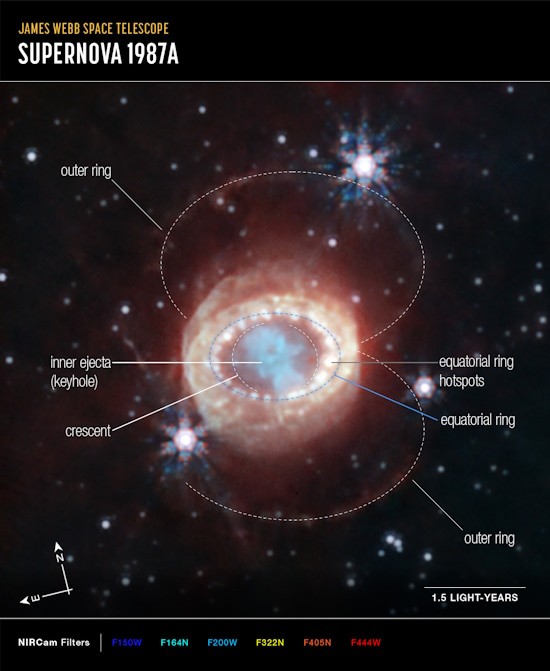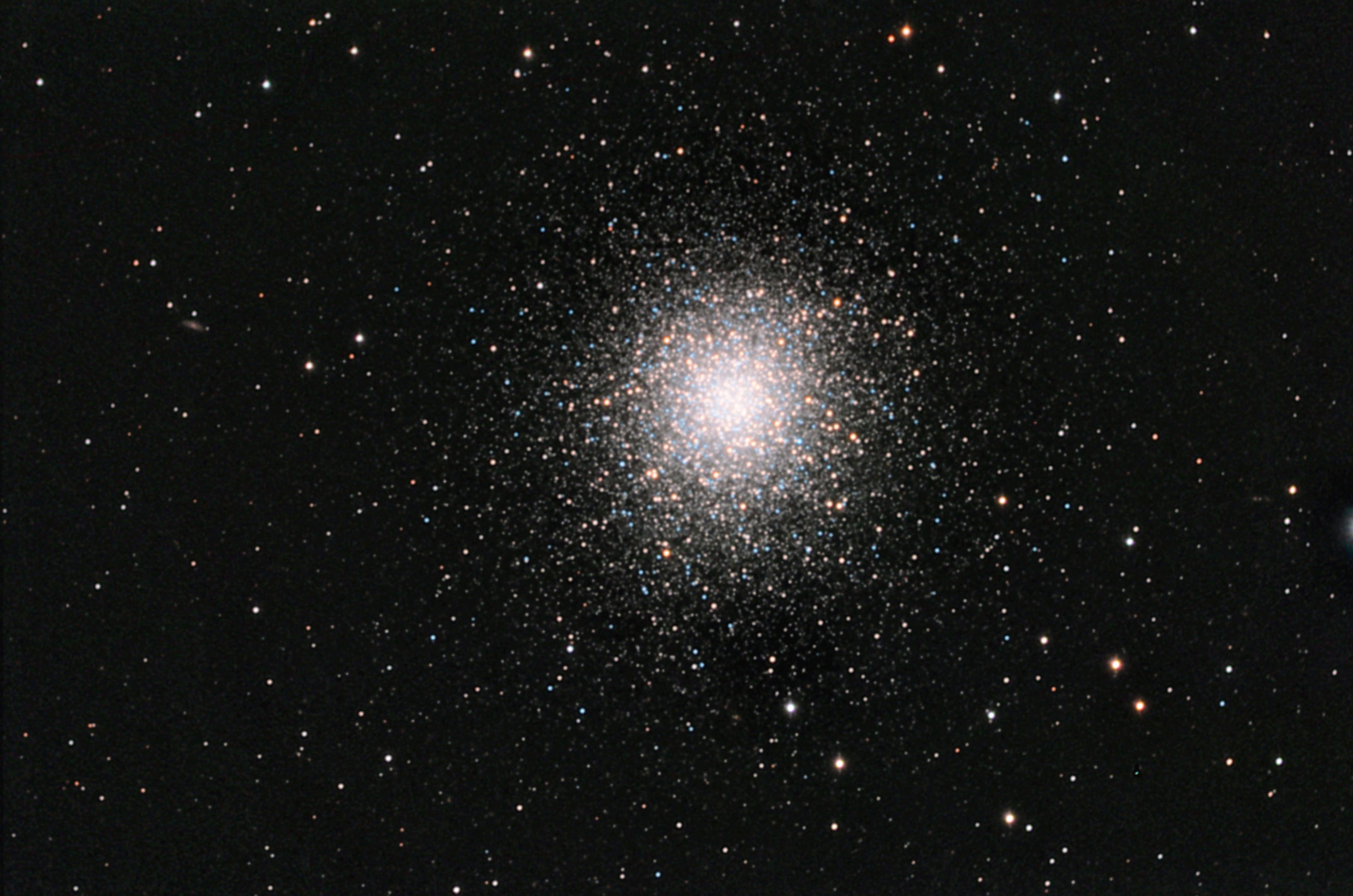Supernova Explosions May Have Kicked-off Abrupt Climate Shifts in the Past… And It Could Happen Again

Nearly four decades ago, astronomers spotted one of the brightest exploding stars in more than 400 years. The titanic supernova, called Supernova 1987A (SN 1987A), blazed with the power of 100 million suns for several months following its discovery on Feb. 23, 1987. Since that first sighting, SN 1987A has continued to fascinate astronomers with its spectacular light show. Located in the nearby Large Magellanic Cloud, it is the nearest supernova explosion observed in hundreds of years and the best opportunity yet for astronomers to study the phases before, during, and after the death of a star. A new study suggests that supernovae such as this could trigger climate change events here on Earth. According to the model, a sudden influx of high energy photons from a supernova would thin the ozone layer, which shields the Earth from the Sun’s rays. Simultaneously, the radiation would degrade methane in the stratosphere, a major contributor to the greenhouse effect that keeps the Earth warm. Put together, these interactions would dampen greenhouse warming and increase the amount of ultraviolet radiation that reaches Earth from the Sun. Brakenridge predicts that knock-on effects could include selective animal extinctions, increased wildfires, and global cooling. (Image Credit: NASA, ESA, CSA, M. Matsuura - Cardiff University, R. Arendt - NASA’s Goddard Spaceflight Center/University of Maryland, C. Fransson)
Supernova Explosions May Have Kicked-off Abrupt Climate Shifts in the Past… And It Could Happen Again
When a star explodes, it sends high-energy particles out in all directions. This burst of energy can travel through space for thousands of years, traversing planetary systems across the galaxy.
In a recent paper, published in the Monthly Notices of the Royal Astronomical Society, Robert Brakenridge of the University of Colorado in Boulder argues that supernovae may be the key to understanding a series of abrupt climate shifts in recent geologic history. The analysis models how such radiation could collide with Earth’s atmosphere, changing its composition. Brakenridge also matches a number of known supernovae to climate shifts preserved in geologic records.
“We have abrupt environmental changes in Earth’s history. That’s solid, we see these changes,” Brakenridge said. “So, what caused them?”
Brakenridge says that, if nearby supernovae caused such changes, further research could help scientists predict similar events in the future and prepare accordingly.
“When nearby supernovae occur in the future, the radiation could have a pretty dramatic effect on human society,” he said. “We have to find out if indeed they caused environmental changes in the past.”
Brakenridge’s recent paper is actually one of many he and others have published on the topic since the 1980s. But, in the past, the idea has rested mainly in the realm of theoretical physics. Brakenridge’s new publication is an effort to link the theory to empirical observations, both in space and here on Earth.
In recent years, high-powered orbital telescopes have offered unprecedented information about the contents and character of supernova radiation. Using these observations, Brakenridge created a more precise model of how this radiation might interact with Earth’s atmosphere than previously possible.
According to the model, a sudden influx of high energy photons from a supernova would thin the ozone layer, which shields the Earth from the Sun’s rays. Simultaneously, the radiation would degrade methane in the stratosphere, a major contributor to the greenhouse effect that keeps the Earth warm. Put together, these interactions would dampen greenhouse warming and increase the amount of ultraviolet radiation that reaches Earth from the Sun. Brakenridge predicts that knock-on effects could include selective animal extinctions, increased wildfires, and global cooling.
Since supernova radiation isn’t arriving on Earth today, the model can’t yet be tested. Instead, Brakenridge looked to records of the past for further evidence. Specifically, he looked at tree rings. Because trees incorporate atmospheric carbon into their trunks as they grow, scientists can look to these records for a glimpse into ancient atmospheric conditions.
In the new paper, Brakenridge parses tree ring records spanning 15,000 years and identifies 11 spikes in radioactive carbon. He argues that these spikes may have been caused by 11 corresponding supernovae.
“The events that we know of, here on earth, are at the right time and the right intensity,” Brakenridge said.
For now, supernovae are just one possible explanation for these phenomena. Solar flares are the most prominent alternative. But, Brakenridge says the evidence is mounting behind his argument. He hopes that further efforts can refine models of environmental effects and correlate them with geologic records, from ice cores to marine sediment to tree rings.
A better understanding of supernova radiation could do more than just satiate curiosity. It could help humans prepare for abrupt climate shifts that could arrive any day. For example, astronomers predict that Betelgeuse, a nearby red supergiant star perched on the shoulder of the Orion constellation, will meet its end in a supernova explosion sometime soon. It could be tomorrow, or any time in the next 100,000 years.
“As we learn more about our nearby neighboring stars, the capability for prediction is actually there,” Brakenridge said. “It will take more modeling and observation from astrophysicists to fully understand Earth’s exposure to such events.”
For more information:
https://www.colorado.edu/instaar/2025/06/10/supernovae-may-have-kicked-abrupt-climate-shifts-past-and-they-could-again
Astromart News Archives:
https://www.astromart.com/news/search?category_id=3&q=.
This is my personal deep sky observing list. I use it to line up my DSO targets on any particular night:
Check out some of my favorite Words of Wisdom:
https://www.astromart.com/news/show/words-of-wisdom-some-are-deep-others-not-so-much
https://www.astromart.com/news/show/words-of-wisdom-my-favorite-proverbs-from-around-the-world
Do you enjoy reading these postings?
Then click here and buy the Astromart crew a cup of coffee (and maybe even some donuts):
https://www.astromart.com/support-options
Funding Member
Sponsors
- SellTelescopes.com
- astronomy-shoppe
- FocusKnobs
- Astromart Customer Service
- Anacortes Telescope
- RemoteSkies.net
- BW
- BBLABS LLC
- Bob's Knobs
- Desert Sky Astro Products
- AstroMart LLC
- Matsumoto Company
- Rouz Astro
- ASTROPHOTOGRAPHY BY MARTIN PUGH
- APM-Telescopes
- Waite Research
- OMI OPTICS USA LLC
View all sponsors



